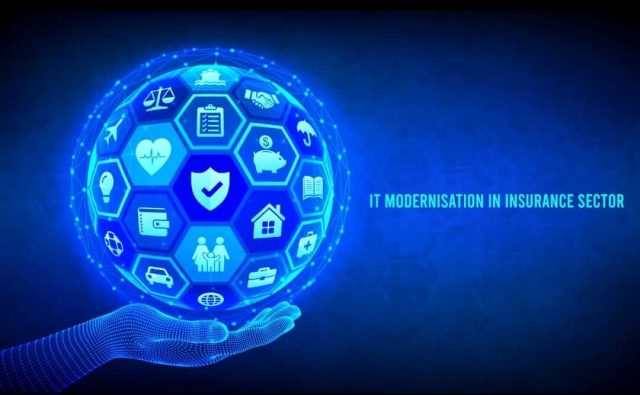
IT Modernisation, as the name suggests, refers to the digital transformation of any business or operation using the latest IT tools and technologies. The aim of adopting any new practice in any sector is the enhanced efficiency, reduced errors and workload, making tasks up-to-date with what the users experience in every sector today. In the insurance sector, Coforge has been actively imparting its domain expertise to develop effective solutions to incorporate modern digital tools to boost the overall working of the insurance sector. The VP at Coforge, Ashwani Kumar, is a veteran in this field and boasts a rather impressive experience of many years. Let us understand the need for IT modernisation in the insurance sector in depth.
What is IT Modernisation?
Modern consumers need customised offers and policies from their insurance companies. For this, the insurance agents need flexible and real-time information and decision making power. This could be done using digital platforms where the policy data and information is transparent and easily accessible. However, in the current scenario, the ageing legacy systems, mainframes and COBOL are becoming huge hurdles in enabling quick services to the insurance agents and potential customers. There is an undeniable need for open-source frameworks, outsourcing, APIs, transformational softwares and other IT tools to digitise the entire insurance landscape. Shifting to such tools will ease the data sharing practices which will result in quick and personalised services to the end consumers while boosting the finances and credibility of the insurance companies simultaneously.
To transform the current business operating environment into a modern digital workspace, DevOps needs to be brought into the ecosystem. This means that the development of modern services and the testing and implementation phases need to work in tandem to achieve efficiency in expanding business in the insurance sector rapidly. While digitising every aspect of the operations, cyber security needs to be upgraded adequately as well. Since the past couple of years, working from home has become the new normal with many MNCs offering permanent work from home opportunities to employees who are willing. In such conditions, cyber security becomes ever-so pertinent. This is also a part of IT modernisation.
How does it affect the insurance sector?
The prime example to witness a real-life implementation of IT Modernisation in the insurance sector is by looking at what Coforge is doing. To ensure the success of large and mid-sized insurance carriers, producer experience and multiple channel access to sales stakeholders is paramount. The Life & Annuities (L&A) domain experts at Coforge like Ashwani Kumar and his team have developed effective distribution and commission solutions to build relevant growth accelerators in the industry. For instance, the insurance accelerators include a focused producer experience platform, cognitive machine vision-based solutions, predictive analytics-based enablers, and a Pega based underwriter workbench. The insurance growth accelerators are categorised under four types; Platform, Optimise, Experience and Analysis.
Implementing such techniques produce result-oriented solutions to benefit the insurance carriers along with improved customer journey, cost optimisation, landscape simplification, and enhancing overall growth. To establish a close-knit relationship between the customer and broker, Coforge has developed a cognitive and systematic approach making use of human logic, machine learning, AI, automation and data-driven analysis to improve the digital capabilities of the business. These tools ensure highly effective closure of new business cases.
In inference, IT Modernisation is turning out to be the go-to solution to keep up with the changing times. This takes into consideration both, the company side of things, as well as, the consumer side along with the mediators like the agents and brokers to keep the traditional way of conducting business intact, but with a modern approach.






























